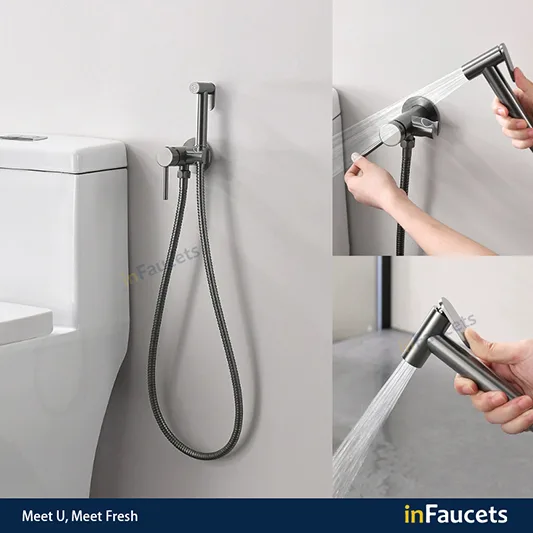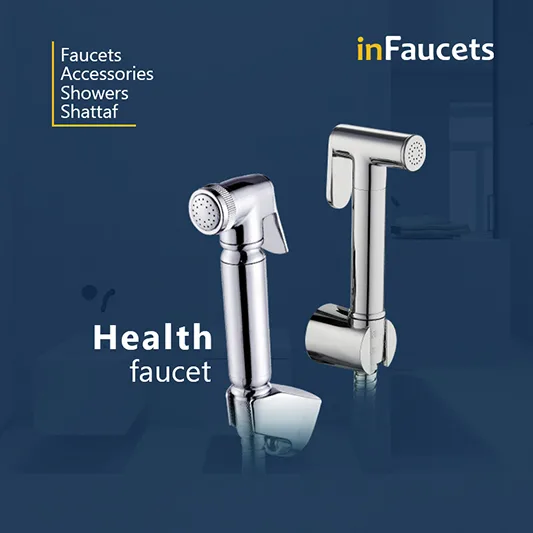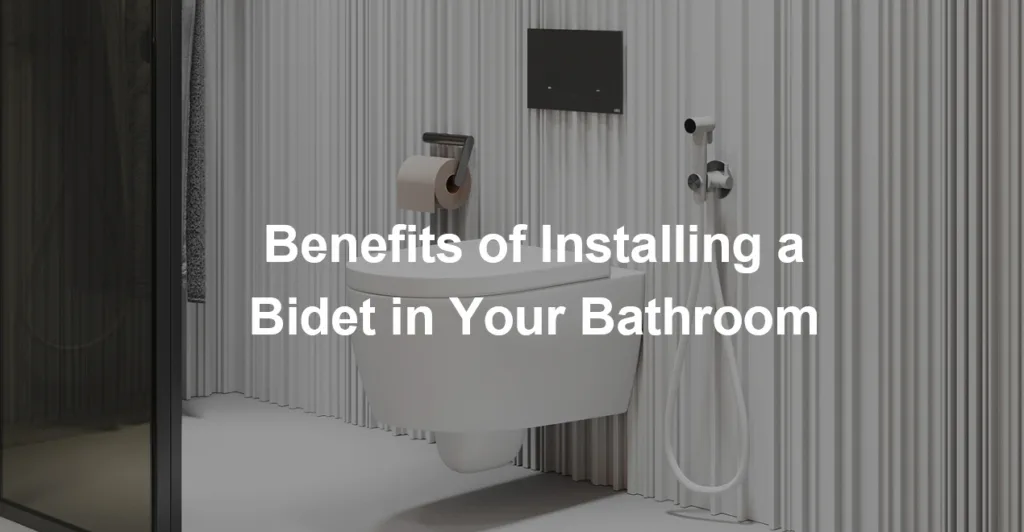Benefits of Installing a Bidet in Your Bathroom
The bathroom routine is evolving, and at the heart of this transformation is the bidet. A staple in European homes and gaining popularity worldwide, bidets offer a cleaner, greener alternative to the standard toilet. Whether you’re considering a standalone bidet, a bidet toilet seat, or a traditional bidet attachment, understanding the advantages can help you make an informed decision. Let’s explore why upgrading to a bidet with a heated seat can enhance your bathroom experience.
Environmental Benefits

Choosing to install a bidet in your bathroom goes beyond comfort; it significantly enhances your bathroom experience while promoting environmental stewardship. Bidet attachments and bidet toilets not only improve personal cleanliness but also advocate for ecological responsibility. Let’s explore the substantial environmental benefits associated with reducing toilet paper usage, minimizing the ecological footprint, and conserving water.
Reduced Toilet Paper Use: Impact on Paper Waste
Switching from toilet paper to a bidet can dramatically decrease the amount of paper waste produced by a household. Statistics indicate that the average person utilizes roughly one roll of toilet paper each week, accumulating significant waste annually. By adopting a bidet seat, families can use less toilet paper by as much as 75%.
This reduction conserves trees and reduces the energy and chemicals involved in the production, processing, and transportation of toilet tissue. Moreover, this decrease in consumption mitigates the strain on our overburdened waste management systems.
Lower Environmental Footprint Compared to Producing and Disposing of Toilet Paper
The production of traditional toilet paper is highly resource-intensive, requiring extensive use of trees, water, and chemicals. This process generates greenhouse gases and produces a considerable volume of wastewater. Conversely, a modern bidet with a heated seat utilizes minimal water and electricity.
For instance, Infaucets’s electric bidet includes an energy-efficient system to heat water and air, providing a comfortable toileting experience while minimizing environmental impact. Adopting bidet toilets significantly reduces ecological footprints by curbing deforestation and pollution.
Conservation of Water Compared to Toilet Use
It might seem paradoxical, but employing a bidet can lead to significant water savings. Traditional toilets use a considerable amount of water with every flush. In contrast, a bidet attachment or bidet seat delivers a precise, controlled spray of water that cleans effectively using far less water than required for manufacturing and disposing of toilet paper.
Moreover, advanced models feature adjustable settings that further reduce water use without compromising on hygiene. This thoughtful application of technology ensures that comfort and conservation coexist seamlessly in daily routines.
Health and Hygiene Benefits

Integrating a bidet into your home isn’t just an upgrade in technology—it’s a significant improvement in personal hygiene and health. Bidet toilets and bidet seats are engineered not just for comfort but also for the cleanliness that supports a healthier lifestyle. This section delves into the enhanced hygiene, reduced risk of infections, dermatological benefits of a bidet, and the positive impact on digestive health that bidets offer.
Enhanced Cleanliness and Personal Hygiene
Using a bidet provides a superior level of cleanliness. The warm water from a bidet sprayer or modern bidet cleans more effectively, removing bacteria and residues that paper might leave behind. For those looking to improve their bathroom routine, a bidet seat can offer a more thorough and refreshing clean, which is essential for maintaining good personal hygiene.
Decreased Risk of Certain Infections and Health Issues
Regular use of a bidet can help decrease the incidence of urinary tract infections, hemorrhoids, and other common health concerns related to poor toilet hygiene. The gentle cleansing action of a bidet helps to maintain a healthy balance of skin flora and prevents the irritation and infections that often accompany toilet paper usage. Particularly for women, consistent use of a bidet can support better vaginal health and overall comfort.
Discussion of Dermatological Benefits, Including Less Irritation from Toilet Paper
Many individuals experience irritation from the friction and chemicals in toilet paper. A bidet, especially models with heated seats and adjustable water pressure, can alleviate this discomfort by providing a hands-free, gentle cleaning option. Bidet seats offer warm water sprays that soothe the skin, which can be particularly beneficial for those with sensitive skin or dermatological conditions.
Impact on Digestive Health and Comfort, Particularly for Those With Specific Health Conditions
For individuals suffering from conditions such as constipation or irritable bowel syndrome, using a bidet can be a game-changer. The warm water used in a bidet clean can help relax the muscles around the anus, which can ease the discomfort associated with bowel movements.
The gentle, non-irritating nature of water also helps those with anal fissures or hemorrhoids, reducing pain and promoting healing. The health benefits of bidets extend to anyone looking to maintain optimum health in their toileting experience.
Economic Advantages
Investing in a bidet offers not only health and environmental benefits but also substantial economic advantages. Companies like Infaucets provide a range of bidet attachments, bidet toilets, and bidet seats that, while requiring an initial investment, can lead to significant savings over time. This section explores the cost-effectiveness of bidets in terms of reducing expenses on toilet paper and plumbing, the comparative costs and savings over time, and the durability and maintenance aspects of bidets.

Long-term Cost Savings on Toilet Paper and Plumbing Issues
One of the most compelling economic arguments for using a bidet is the reduction in the need for tissue. A bidet uses water to clean, significantly decreasing the amount of toilet paper a household consumes. This can translate into considerable savings, especially in larger households.
Furthermore, bidets help reduce plumbing issues caused by toilet paper clogs. With fewer blockages, households save on costly plumbing repairs, making bidets a cost-effective option for both toilet and septic systems.
Analysis of Initial Costs vs. Long-term Savings
While the upfront cost of a bidet can be higher than a standard toilet, the long-term savings are undeniable. For instance, the initial cost of an electric bidet from Infaucets might seem steep, but considering the savings on toilet paper and reduced plumbing repairs, the investment pays off.
Over the lifespan of the bidet, which can be quite extensive, the ongoing costs are minimal compared to the continuous purchase of toilet paper and the potential for costly plumbing issues.
The Durability and Maintenance Costs of Bidets
Bidets are designed to be durable and require minimal maintenance. Infaucets’s bidets, for example, are built with high-quality materials that withstand frequent use. Electric bidets come with extra features like heated seats and warm air dryers that enhance durability and function.
Regular maintenance is straightforward and usually involves simple cleaning and occasionally checking the water supply and connections. The long-term durability and low maintenance requirements contribute to the overall cost-effectiveness of bidets, making them a practical addition to any bathroom.
Ease of Use and Accessibility
The adoption of bidets in bathrooms is often praised for the significant advancements in ease of use and accessibility they bring. Modern bidets incorporate user-friendly features that make them suitable for a wide range of users, including the elderly and individuals with disabilities.
These enhancements not only improve comfort but also ensure independence in the bathroom. Let’s delve into the practicalities of bidets, examining their user-friendly aspects, benefits for those needing special care, and their utility in particular life circumstances, such as recovery from surgery.
User-friendly Features of Modern Bidets
Modern bidets are equipped with intuitive controls that make operation effortless. Features like adjustable water pressure, temperature controls, and heated seats can be easily accessed through a remote control or a control panel located conveniently on the side of the bidet toilet. These extra features allow users to customize their experience to suit their personal preferences and needs, making the bathroom experience more comfortable and accommodating.
Benefits for Elderly and People with Disabilities
For the elderly and people with disabilities, bidets offer a level of autonomy in personal hygiene that traditional toilets cannot match. The electric bidet, for instance, can be a game-changer for those with limited mobility.
With features like warm water spray and heated seats, users can maintain cleanliness without the need for physical exertion or the assistance of a caregiver. The ease of use provided by bidets significantly enhances the quality of life for individuals facing physical challenges.
Comparative Ease Compared to Traditional Toilets in Specific Scenarios
In scenarios such as post-surgery recovery, where individuals may find it challenging to perform regular motions required by the use of traditional toilets, bidets can offer a much-needed relief. The gentle nature of water sprays helps in cleaning without the need for rubbing or wiping, which can be painful or difficult post-operation. The warm air dryer feature found in many bidets eliminates the need to physically dry with toilet paper, further reducing discomfort and enhancing the toilet experience.
Ease of Installation and Maintenance
Installing a bidet in your bathroom is a straightforward process that enhances your daily bathroom routine. Infaucets offers a variety of bidet models, including standalone bidets, toilet seat attachments, and more advanced configurations. This section provides an overview of the basic installation steps for these types, as well as essential maintenance tips to ensure your bidet remains in optimal condition.
Basic Steps Involved in Installing a Bidet in an Existing Bathroom
Here are the basic steps for installing a toilet bidet combo in an existing bathroom:
- Turn Off the Water Supply: Ensure that the water supply to your toilet is shut off to avoid any leaks during the installation process.
- Drain the Toilet Tank: Flush the toilet to drain any remaining water from the toilet tank and bowl to prevent spillage.
- Remove the Existing Seat: Unscrew the fittings that hold the existing seat in place to prepare for the attachment.
- Install the Bidet Attachment: Place the attachment onto the toilet rim, aligning it with the holes for the toilet seat screws.
- Secure the Bidet Attachment: Using the provided brackets or screws, securely fasten the bidet attachment to the toilet.
- Connect the Water Supply:
- Attach the T-adapter to the toilet’s water supply valve.
- Connect one end of the water supply hose to the T-adapter and the other end to the bidet attachment.
- Reattach the Toilet Seat: Place the seat back on top of the bidet if applicable, and secure it with the original fittings.
- Turn On the Water Supply: Reactivate the water supply to the toilet and check for any leaks in the connections.
- Test the Bidet: Test the bidet toilet to ensure that it sprays water correctly and adjust the water pressure and temperature settings according to your preference.
These steps should guide you through the installation of a bidet in your existing bathroom, allowing you to upgrade your bathroom experience with minimal hassle.
Overview of Different Types of Bidets

Bidets come in various forms to suit different bathroom configurations and personal preferences. Standalone bidets are separate plumbing fixtures positioned next to the toilet, offering features like warm water sprays and adjustable water pressure.
Toilet seat attachments are a more compact solution, easily installed on your existing toilet. They incorporate similar features to the standalone models but without needing additional space. Other types include portable bidet or travel bidet, which are great for travelers, and bidet sprayers, which are handheld devices offering targeted cleaning.
Tips and Considerations for Maintenance
Maintaining a bidet is crucial for ensuring longevity and performance. Regular cleaning with mild soap and water is sufficient for most bidet models. It’s important to avoid harsh chemicals that can damage the bidet’s components.
Check the nozzles and sprays periodically to ensure they are free of debris and limescale, which can affect water pressure and cleanliness. Additionally, inspect the hoses and connections annually for any signs of wear or leakage.
Expert Opinions and Research
The adoption of bidets in modern hygiene practices is not just a trend but a well-researched shift towards better health, environmental sustainability, and efficiency in plumbing systems. Insights from various experts such as hygiene professionals, environmentalists, and plumbers, as well as numerous studies, substantiate the many benefits of putting a bidet in your bathroom.
This section delves into the perspectives of these experts and reviews relevant research findings that highlight the effectiveness and impact of bidets.
Insights from Hygiene Experts, Environmentalists, and Plumbers
Hygiene Experts: Medical and hygiene professionals often advocate for the use of bidets due to their superior cleaning capabilities compared to traditional toilets. Experts highlight that bidets offer enhanced personal hygiene, reduce the occurrence of rashes and infections, and can even contribute to improved vaginal and urinary health. The warm water used in bidets is particularly effective in maintaining cleanliness without the harshness of wiping.
Environmentalists: Environmental advocates praise bidets for their role in reducing toilet paper consumption. A single bidet toilet can significantly decrease the household demand for paper, thereby conserving forest resources and reducing the environmental burden of paper production, which includes water and energy consumption and chemical processing. This shift can also reduce the volume of waste in landfills and the frequency of septic tank maintenance.
Plumbers: From a plumbing perspective, bidets are lauded for minimizing clogs and sewer blockages that are often exacerbated by toilet paper and wet wipes. Plumbers note that bidets contribute to healthier and more efficient plumbing systems, reducing the need for maintenance and repairs. This can lead to cost savings for homeowners and less strain on municipal sewer systems.
Summary of Research Studies on the Effectiveness and Impact of Bidets
Research studies consistently confirm the benefits of bidets. For instance, a study published in the Journal of Environmental Health Perspectives noted a significant reduction in the prevalence of hemorrhoids, urinary tract infections, and other skin conditions among bidet users compared to those who solely used toilet paper.
Another study highlighted the environmental impact of bidets, showing that if one in four households in the United States switched to bidets, it could save approximately 15 million trees annually.
Furthermore, economic analyses have demonstrated that bidets can be cost-effective over time. The reduction in the use of toilet paper and decreased plumbing issues can result in substantial savings, validating the initial investment in a bidet toilet.
These findings are crucial for homeowners considering a bidet installation as they offer concrete evidence of the long-term benefits, both economically and environmentally.
Conclusion
Integrating a bidet into your home brings significant advantages in hygiene, environmental sustainability, and economic efficiency. These devices enhance personal cleanliness, reduce reliance on tissues, and offer substantial savings on maintenance costs. As global awareness and cultural acceptance of bidets grow, their adoption is expected to increase, making them a common feature in bathrooms worldwide.
Looking ahead, the trend towards eco-friendly and health-conscious living suggests a bright future for bidet toilet technology.

For those considering home renovations, installing a bidet is a forward-thinking choice that promises long-term benefits for both the environment and everyday comfort. Embrace this next step in bathroom evolution by exploring the options available from companies like Infaucets, and invest in a smarter, more sustainable bathroom experience.

